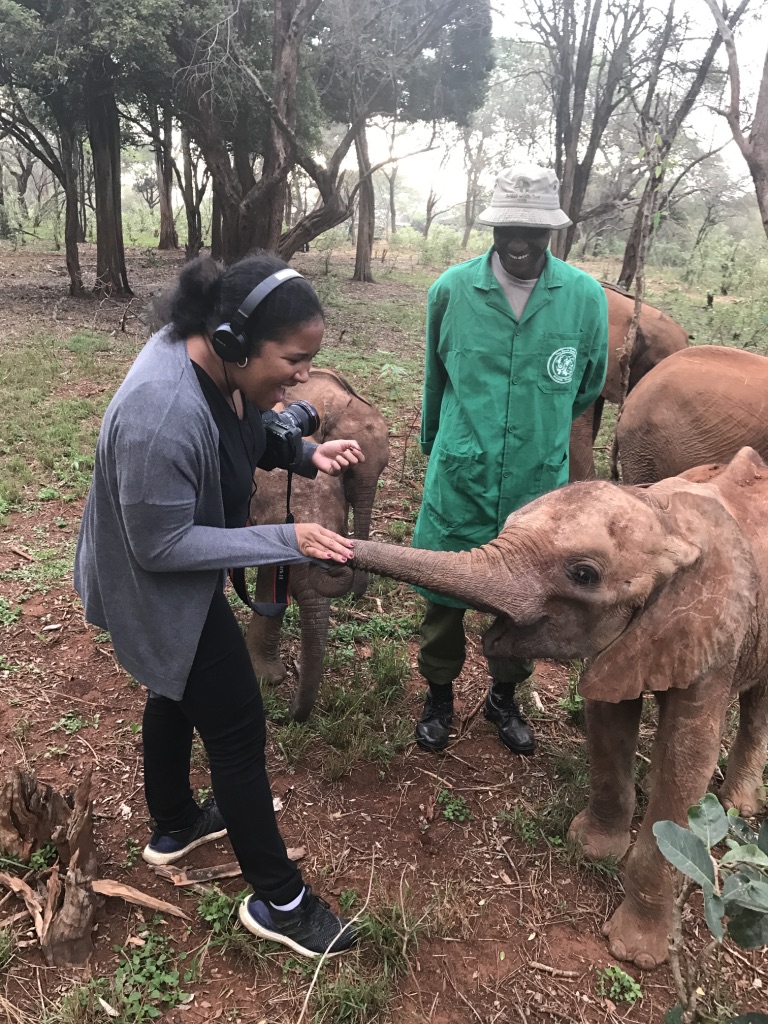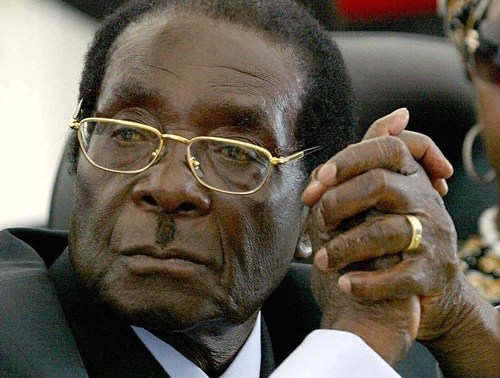
The Savé Valley Conservancy, 900 square miles of pristine wilderness in the Lowveld of southeastern Zimbabwe, seems like a paradise.
Drive along its dirt tracks, past flat-topped acacias and vast-trunked baobab trees, and you scatter zebras and warthogs, impalas and wildebeest, kudus and waterbuck. Elephants lumber through the bush, leaving destruction in their wake. Giraffes placidly return your stares. Baboons cavort in the trees. A crowned eagle flies overhead with a rock rabbit in its talons. A pack of exquisitely patterned wild dogs lie on the warm red earth. There are lions and leopards, too, but out of sight.
My guide and I meet Bryce Clemence, the stocky, bearded outdoorsman who heads the conservancy's Special Species Protection Unit (SSPU), by a muddy waterhole so that he can show us the most special of those species. He and a couple of his armed men lead us a few hundred yards into the bush before silently motioning us to stop. We wait, move on, stop again. Clemence points. Thirty yards away stands a two-ton rhinoceros, a 15-year-old bull. It cannot see us, for rhinos have poor eyesight. It cannot smell us because we are downwind. But it senses our presence. Its ears revolve like miniature satellite dishes.
As we study this magnificent, primeval beast through our binoculars, one thing quickly becomes apparent. It has no horns. Normally it would have two, weighing seven kilos or more, but they have been removed in an effort to protect it. Rhino horn fetches around $60,000 a kilo in China and other east Asian countries, where it is considered an aphrodisiac and a cure for diverse ailments. This animal's horns would have been worth more than $400,000 – a fortune in Zimbabwe, where the average household income is $62 a month and unemployment exceeds 90 per cent.
Sadly, not even de-horning works. Poachers will kill de-horned rhinos for any residual horn. In February 2015 they shot a six-month-old calf for just 30 grams of horn, Clemence tells me.
Savé Valley may look idyllic, but it is a front line in a war against rhino-poaching. More than 1,100 of the animals were killed across Africa in 2016, leaving barely 20,000 white rhinos, classified as "near threatened" by the International Union for Conservation of Nature, and 5,000 "critically endangered" black rhinos. What distinguishes Savé Valley is that it has begun to turn the tide, but only because it has access to the sort of funding that most African national parks can only dream of.
Clemence's quasi-military operation consists of 35 highly trained men, all expert trackers, supremely fit and equipped with semi-automatic rifles and radios. Working in pairs, they do 10-day stints in the bush, monitoring the conservancy's 168 rhinos from dawn to dark and endlessly searching for human tracks – or "spoor".
They are supported by a canine unit whose two Belgian Malinois dogs can track at night and over rocks; a substantial network of paid informants in the surrounding communities and beyond; four 4x4 vehicles and 12 motorbikes; and nearly 100 armed scouts employed by the two-dozen private ranches that make up the conservancy.
Even that force is insufficient, Clemence says. The poaching gangs are growing more sophisticated. They now use high-powered hunting rifles with silencers to shoot the rhinos, and AK-47s to ward off the rangers. Sometimes the poachers use AK-47s against rhinos too: in 2014 one was hit 23 times.
They have begun using poison. One poacher was caught after laying oranges and cabbages laced with the pesticide Temik in the path of a rhino – Temik is nicknamed "Two-step" because that is how many steps an animal takes before dying. Another poacher planned to poison a waterhole, but was thwarted by an informer. "Poisoning is disgusting because it's totally indiscriminate and has the potential to do massive harm," Clemence says.
He has also caught poachers preparing to use the sedatives ketamine and xylazine. Having darted a rhino, they would then hack off its horns before it woke. They once hacked off the horns of a rhino that had been knocked out by a bullet and it woke with half its head missing. The creature survived for a week before Clemence's unit found it. Vets had to put it down. "When you catch a poacher you want to beat him to death with a pick handle and very slowly break his bones, but you have to be professional," says David Goosen, manager of the 230-square-mile Sango ranch, which forms part of the conservancy.
The odds are stacked against the SSPU in other ways, too. The poachers are paid well by the syndicates that run them – perhaps $5,000 each for a kilo of rhino horn. And even if caught, their chances of escaping punishment are high. Thanks to bribery or incompetence, just 3 per cent of prosecutions for rhino poaching in Zimbabwe end in convictions.
"You have to virtually catch them in the field red-handed, and even then they often get away with it," Goosen says. "As soon as they get to the police station, a well-connected lawyer turns up, which means someone higher up is looking after their interests." The maximum sentence for intent to kill a rhino is nine years for a first offence – less than for stealing cattle.
The SSPU is prevailing nonetheless. In the first three months of 2012, when Clemence arrived, the conservancy lost 14 rhinos. In 2015 it lost 12, last year three. It has also defeated Zimbabwe's most notorious rhino-poaching gang.
Tavengwa Mazhongwe learned his craft from his older brother, "Big Sam", who was killed poaching in 2009. Mazhongwe was responsible for at least 150 rhino killings, including many in Savé Valley. In December 2015 Clemence learned he was planning another attack and put his rangers on alert.
They found the gang's spoor at 6:30 one morning, and tracked the four armed men in intense heat for nine hours. The gang took great care to cover their tracks, but late in the afternoon the rangers found them resting in a river bed. The rangers opened fire, killing one and seriously wounding a second. Mazhongwe and one other man escaped, but he was arrested near Harare two weeks later and given a record 35-year sentence for multiple offences. A judge had to acquit an officer in Zimbabwe's Central Intelligence Organisation who drove the gang to the conservancy in a government vehicle because, he complained, the police did not dare investigate govenment officials. The rangers recovered an AK-47, a Mauser rifle with silencer, an axe, rubber gloves, a medical kit, tinned food and a phone-charger pack.
"You'll never get to where you say 'we've won', but we have won in the sense that we've brought poaching down to a manageable level," Clemence says. "We've taken out some of the most notorious syndicates. Victory will simply be breeding more than we're losing and having sustainable numbers to pass to the next generation." He hopes that the conservancy's rhino population will reach 200 within two years, enabling it to relocate some animals to other parts of Zimbabwe where the battle is going less well.
The SSPU's success comes down to skill, motivation, organisation and – above all – resources. The unit costs $400,000 a year, and is funded mainly by foreign NGOs such as Britain's Tusk Trust. It receives practical support from the conservancy's private ranches, some of whom – given the dearth of tourism – have to generate the necessary funds by permitting limited elephant and lion hunting for $20,000 an animal.
Zimbabwe's national parks have no such resources. That is why private conservancies have 80 per cent of the country's rhinos but 1.5 per cent of its land, while the parks have 15 per cent of the land but 20 per cent of the rhinos. Within a few years most of those parks will have no rhinos at all.

Education Resource
Meet the Journalist: Janelle Richards
Janelle Richards, a producer at NBC News, traveled to Kenya to report on the technology industry...











